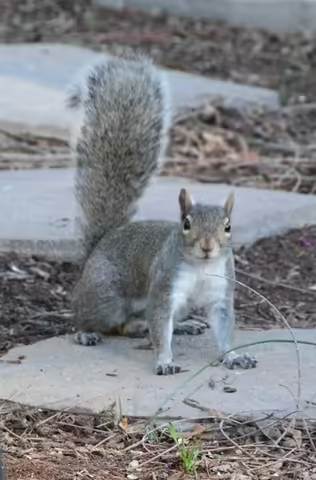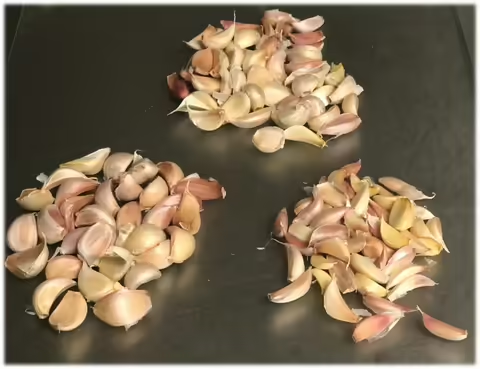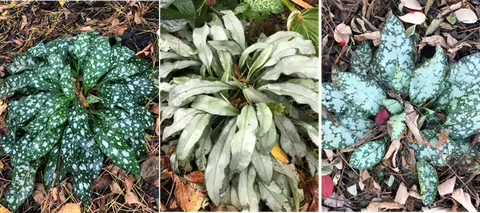Chipmunk or squirrel, it doesn’t matter, cuteness only goes so far! Most especially after the little fiends have dug up several of the spring-blooming flower bulbs and garlic I had just planted the day before.
My normal practice of firming the soil over the bulbs, watering, and covering with leaves was just not enough prevention for some locations this year. Critters fortunately left alone deeper planted bulbs like daffodils, but they went to work on anything shallow like garlic and crocus. No eating of bulbs or cloves it seems, just unearthing and scattering. A piece of hardware cloth with a rock on top was a good fix for the replanted spring-blooming bulbs but the garlic presented an additional challenge. Since it is not uncommon for garlic sprouts to emerge prior to truly cold weather, I used the more open weave chicken wire instead just in case leaves needed to grow through, and ease removal later.
Planting Garlic
Before scavenging rodents messed it up, I had what I thought was a nice garlic planting. Garlic should be planted before the ground freezes, early enough in the fall so that a good root system can develop, but late enough to prevent significant shoot emergence above the soil line. I usually target planting for the second week of October which aligns with the first average frost date for my area. Even if it times out a bit early due to Mother Nature keeping things warm too long and cloves do sprout a bit, the freeze damage to the top growth is usually just minimal.
From experience, garlic sells out quickly, so early ordering is advised. This year I’m trying ‘Nootka Rose,’ which is a softneck type. I plant 1” deep on a raised bed, using 7” x 7” spacing.
Just before planting, I break the bulbs down into individual cloves, then visually sort them roughly into three size groups…small, medium and large. I always plant the large cloves first, then the medium cloves to finish out the space I have. I usually don’t allocate enough space to plant the small cloves, so I use those in the kitchen. This process produces a more uniform and productive stand for the space I have, and the smaller less productive cloves don’t go to waste. Out of the seven bulbs in my one-pound order, I got 52 small cloves, 49 medium cloves and 33 large cloves…that’s a lot of garlic to enjoy now, and to harvest later.
Lunworts in the fall
At this times of the year, certain plants really stand out from the rest. Most obvious are plants that have fabulous fall foliage, but that does not always mean from a loss of chlorophyll. In the case of lungworts (Pulmonaria sp.), it’s the fact that their foliage is still so beautiful and intact that makes then stand out. With lungworts, its all about the spots. Some like ‘Trevi Fountain’ and ‘Shrimps on the Barbie’ sport numerous distinct silvery green spots on a very visible backdrop of deep green. Other cultivars like ‘Diane Claire’ and ‘Samouri’ have so many spots they coalesce together to create a leaf that appears almost entirely silvery green. Then there are cultivars like ‘High Contrast’ and ‘Pretty in Pink” somewhere in the middle, with both distinct spots and areas of merged spots. Regardless, lungworts are in their fall glory and certain to catch the attention of any passerby.


